Washing of red blood cells, a possibility or not; How and why?
Hello beautiful inhabitants of hive, I welcome you to an interesting section with me once again. Today's topic will sure sound and look absurd or probably, you might be in doubt with the possibility of it happening. Well, a very important thing the universe acknowledges, is the fact that, the day you stop reading and learning, that's the very moment you start dieing.
The desire to seek for knowledge as regards to human inquisitive nature, is endless. Today's topic for sure, if you are not in the field of diagnostic medicine, can throw you in the ocean. I will as usual, make the discussion easy to read and understand and as well carry you along by giving simple definitions to terms I feel you might want to struggle with or consult the dictionary, which will of course make the read stressful and easy to flow with.
Let's begin with a little reminder of what the red blood cells is and what basically they do for us. The red blood cells no doubt, the chief transporters of hormones, carbon dioxide and oxygen, vitamins and minerals, most especially iron in the body and waste metabolites which are products of the body's metabolic processes.
The red blood cells also known as the erythrocytes are the integral make up of the human blood and without them, there is no life in humans and animals. This highlighted functions are just a scratch from what they do. However, we will limit the functions to the above highlighted ones.
In a normal adult, there is an average of 5litres of blood pumped by the heart to all organs. Conditions that cause an excessive increase in the normal level of blood leads to polycythemia. It could be polycythemia Vera, which is caused by cancer, though this is a rare condition. In essence, in polycythemia, you have more of red blood cell volume, and less plasma content.
On the otherhand, deceased level of blood cells leads to Anaemia and this can be caused by autoimmune diseases, e.g Autoimmune haemolytic anaemia (condition that causes production of auto antibodies that attack the red blood cells leading to its destruction). The continual destruction of the blood cells, causes a drastic reduction in the blood cells volume (anaemia) and cumulated effects of all this events leads to a condition known as jaundice. In essence also, you have less red blood cell volume and more plasma in patients with anaemia.
When we talk about washing of red blood cells, what really comes to your mind? Do you think it involves the use of detergents or soaps to wash them, or is it just washing off stains of blood off the hands? Even if it is, how is it done, do we have to drain all the blood in the individual or animal in order to wash them? Or do you think it is utterly impossible to wash the human red blood cells?
If any of the above thoughts are what you are probably have, whoola, permit me to inform you that, they are all wrong. The human blood cells can be washed. The big question is how and why do we do them? Read along and you will find out soonest.
Just for clarity sake, blood is the fluidic part of the body system, the medium described above as the convener of major components, while the red blood cells (erythrocytes) are simply the components of the blood. So when we talk about washing, we are strictly referring to washing the cells of the blood. So you we want to analyze the blood as a whole, you would find that, besides just the red cells, it is made up of other components like plasma, platelets etc.
Some of the blood components are only macroscopically or microscopically visible upon standing them in the container or blood bag into which they are Collected for more than an hour. The principle behind this is, is that, the influence of gravitational force will push the denser components of the blood (red blood cells settle at bottom) to the bottom of the container while the less dense components settle above (plasma, platelets). This is though a time wasting process, with a centrifuge, the separation is achieved faster and even more accurately.
Washing blood in its strict sense, means washing the red cells of the blood. So how is this done and why? Let's take them one after the other. Let's begin with why we wash red blood cells.
Rationale behind washing of red blood cells
Imagine blood cells like a beads thrown into a used engine oil and by virtue of an external rotational force, continues to move alongside the oil. Over time, on bringing out these beads, you would observe that some contents in the oil have been stuck on the body on the beads thus, making the surface either look dull and covered with dirt.
Liken the beads to red blood cells and remember, the blood contains other substances like protein, fats. Amidst all these substances, the red blood cells flows. These substances glue to the red blood cells and infact naturally, the cell walls of red cells are made up of structural cell membrane proteins and fats that also contribute to the integrity of the cell walls as well as play osmoregulatory functions.
As much as they perform one or two roles in maintaining the structural integrity of the cells invivo (within the body), they have the potential of causing a whole lot of interference in invitro (outside the body) reactions, especially reactions involving antigen and antibodies. These other components of blood are usually not needed in some situations especially during cross matching (the process of using a donor's blood and reacting it with a recipients serum) which is a prerequisite for blood transfusion.
In cross matching of blood, a donor's blood (someone who is willing to donate blood to save another person's life) is cross reacted by mixing it with the serum of the patient/recipient (the person in critical need of the blood). During these process, one of the reagents used in the process Known as Anti-human globulin (coombs reagent) is susceptible to inactivation by any impurities in the form of proteins and peptides on the red blood cells.

Agglutination reactions aided by Coombs Reagent
Coombs reagent is used mostly in cross matching to enhance agglutination reactions (reactions between antibody and antigen to produce a visible clumps of red blood cells) and make them more obvious. A positive cross matching evidenced by agglutination or clumping of red blood cells means that the blood of the donor is not compatible with the recipient's blood. This is usually caused by autoimmune antibodies (cells that attack self). Your body cells is not in any way expected to cause you harm, when this happens, it is referred to as auto immune.
In order to avoid any form of impurities that would deactivate the coombs reagent which can even lead to a wrong or false negative result, the cells are washed using normal saline (aka physiologic saline - a fluid that has the same pH with the human body cells). It is an isotonic solution and cannot cause any form of lysis (destruction of red blood cells through rupture of the cell membrane leading to a release of the cell's internal content).
You would want to ask, why can't water be used? Well it's simple, normal water is an hypotonic solution and if it comes in contact with the blood cells, it will cause lysis because of the difference in osmotic potential. Remember, osmotic potential is the water moving ability of a solution and water will always move from a region of higher solute potential to a region of lower potential.
Tonicity of red blood cells when placed in hypertonic, hypotonic and isotonic solutions. In hypertonic solution they undergo plasmolysis, they hemolyze in hypotonic solution and remain normal in isotonic solution
Normal water has higher solute potential than does the red blood cells hence, water will continue to move into the red blood cells until it swells and burst (lysis) thereby releasing its cellular contents. This is the reason water cannot even be used in any investigation that involves human cells in general, rather, normal saline is used.
Washing of red blood cells helps us achieve two main things of which are:
removal of any impurities on the surface of the red blood cells that might interfer or deactivate the Coombs Reagent and secondly,
Exposure of the antigenic sites that is, the sites through which antibodies bind to the red blood cell surfaces leading to clumping.
If the cell surface is not expose and the impurities cleared through the washing with normal saline, the chances of getting a false negative result is high. Washing of red blood cells is very much important to ensure free, safe and healthy cross matching and subsequent transfusion without any form of post transfusion reactions (immune reactions that occurs after a patient is transfused with incompatible blood of a donor).
Now we understand why we wash red blood cells, how is it then carried out? This is another question you probably have been waiting for. The process is pretty simple. Depending on what the red blood cells are washed for, the quantity of normal saline varies. Let's just get on with it, as you read along it becomes more clearer.
How to wash Red blood cell
Like I earlier stated, washing red blood cells is highly dependent on the volume of blood you want to wash and also what the blood will be used for. Besides the main two reasons highlighted above earlier, sometimes it extends beyond just removing impurities and exposing the antigenic sites, there are some disease conditions that will require the need of washed cells to be transfused to the recipient in need of blood. We will discuss this in later while concluding the article.
When it involved cross matching, the required volume of the blood is dropped in a test tube and normal saline added. The mixture is then spun using the centrifuge. By virtue of the centripetal rotationally force, as the red cells rotate, the impurities on proteins that will deactivate coombs reagent are all dislodged from the red blood cell surface.
The supernatant which obviously will look cloudy and turbid as an indication of how far the impurities have been dislodged (the clearer the supernatant, the higher the purity of the red cells. The supernatant is then decanted and the red cells which will be temporarily attached to the bottom of the tube is resuspended by tapping the bottom gently. This first spinning is not enough to remove all the impurities so it will require two or more spin.
After the first spinning, the second and third spinning is done to achieve higher purity. Once it is observed that the supernatant is clear enough, then it is suitable for either transfusion or cross matching. It all depends on purpose.
Various health conditions can necessitate the need to transfuse an patient with washed red blood cells. This is usually seen in some types cancer cases. According to the report of Schmidt and colleagues in 2015;
They found clinical benefit in using washed RBCs in adult acute leukemia patients <50 years of age. Additionally, we have found clinical benefit in using washed RBCs in patients who have had repeated febrile transfusion reactions. Similarly, patients with IgA deficiency receive washed RBCs
In essence, washed red blood cells play crucial role in the management of some cancer cases as well as treatment and management of diseases associated with immune system. Additionally,
RBC washing is frequently used in neonates and infants undergoing cardiac surgery. One important reason for this practice is the reduction in extracellular potassium that once transfused can cause hyperkalemia in the patients..
In conclusion, washing red blood cells using normal saline reduces the chances of any form of reactions as we have see from the explanations above. I practice, the most widely applied use of washed red blood cells is majorly in cross matching. These washed cells reduces any chances of post transfusion reactions.
Furthermore, In some cases where patients need only the packed cells - whole blood that has been either allowed to settle by virtue of gravitational force or have been spun using centrifuge thus leaving a high concentrated volume of red blood cells settled at the bottom of the centrifuge tube. With the help of a plasma extractor, the packed cells are separated and the washed subsequently.
Washing of blood plays a significant role in the practice of blood transfusion and can't in any way be avoided as long you wish to cross match blood for donation. Now you know, your blood can be washed!
Until I come your way again, stay cool.
References
•Proven and potential clinical benefits of washing red blood cells before transfusion: current perspectives
•The Molecular Structure of Human Red Blood Cell Membranes from Highly Oriented, Solid Supported Multi-Lamellar Membranes
•Coombs Test
•washed red blood cells - Blood Component
•Washed red cells: theory and practice
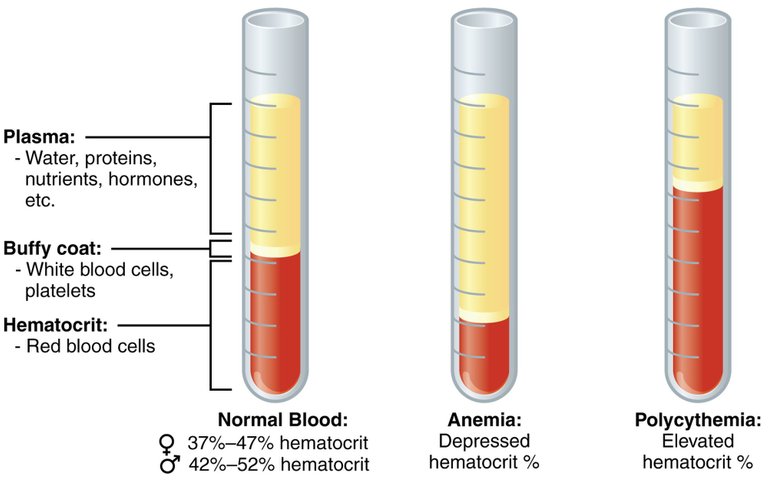
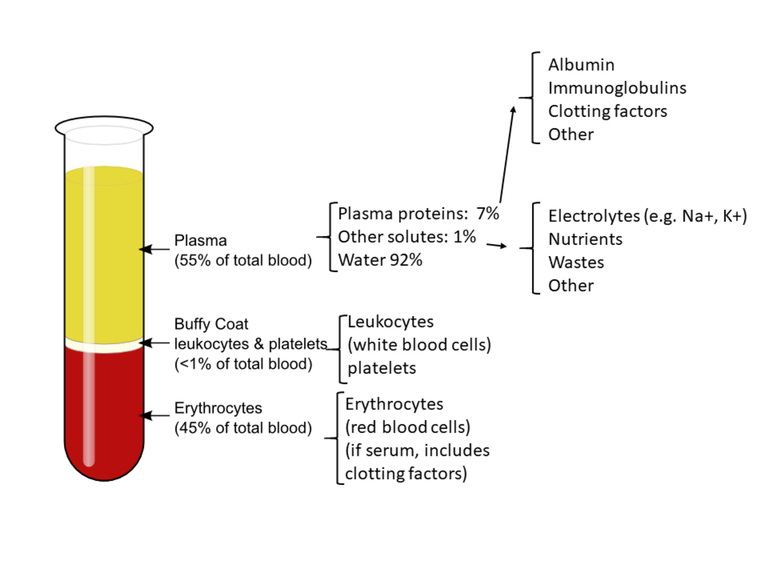
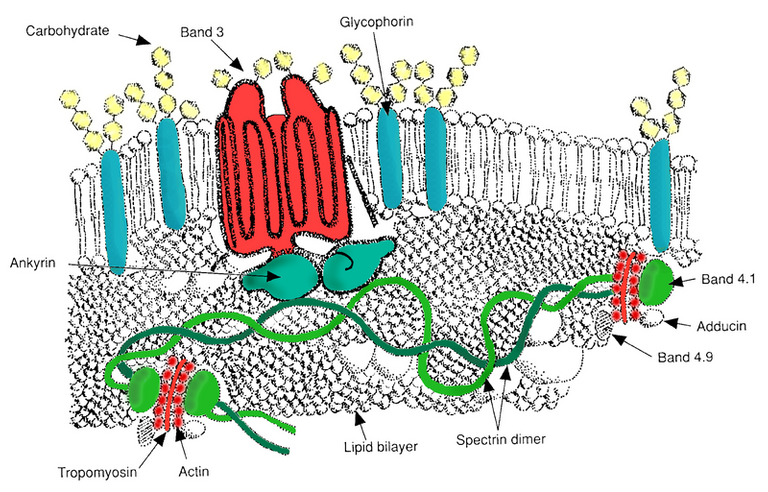
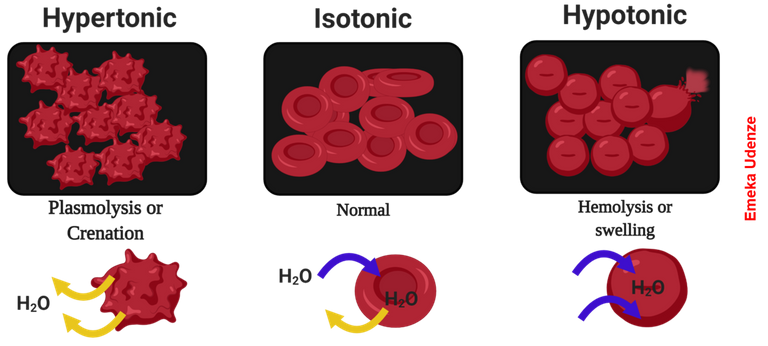
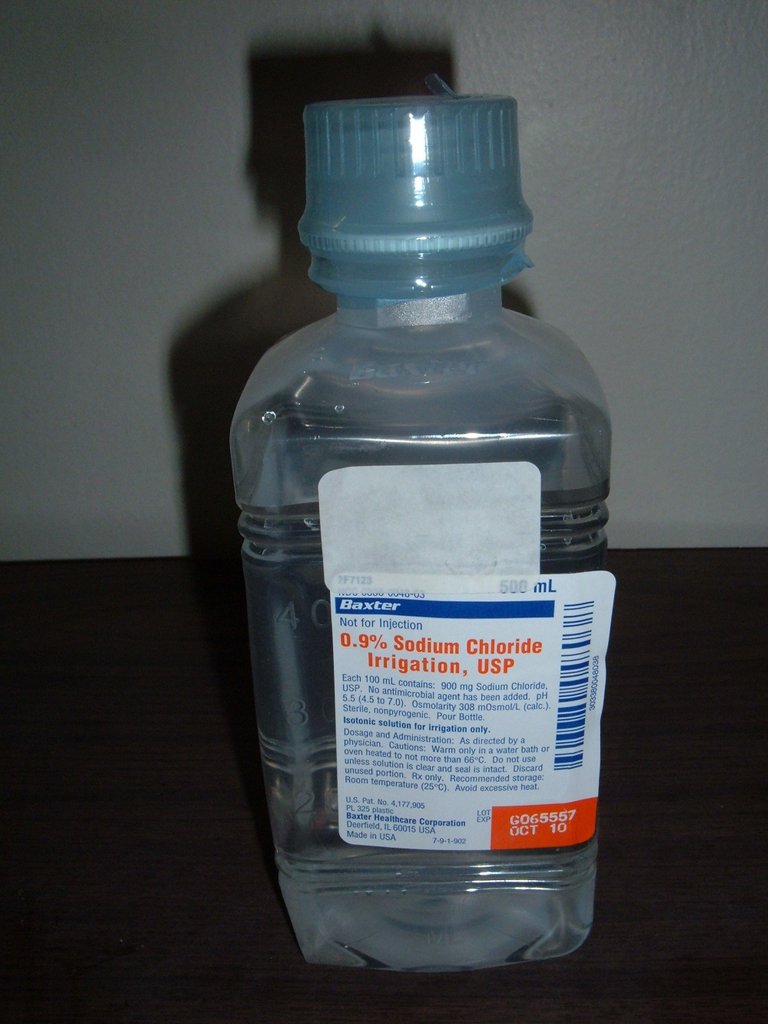

When I first read the title of this post, I immediately though about something of an Ig nobel prize calibre. Washing blood cells? Really? What the hell! And especially, why would we do this?
Of course I was not disappointed with this post, in which I learned a few things.
Actually no, except that after having read this, I could not prevent myself from thinking about this :D
Now a real question: except for the case of a transfusion where washing blood cells externally is needed for an obvious reason, can’t our body deal with this task and wash the blood cells by themselves? For instance, if for some reason my blood cells need to be washed, can't my body detect this and do it alone?
Wao, thoughtful question sir,
An emphatic No sir. The body can't. Infact instead of Washing, it destroys the red blood cells in the spleen. Aging red blood cells usually loose their structural integrity and they tend to be deformed in some cases. In the spleen, the aperture through which they normally pass through is narrow and they will need to twist and pass through it. Red blood cells with abnormal contents on their membrane surface lack such ability to pass through the spleen and as Such, they are marked for destruction. This is the mechanism through which after 120days, the red blood cells are recycled.
Oh I see. I didn't know this. Thanks for your answer!
So the washing process is really targeting blood transfusion and nothing else. Is that correct?
Yes, exactly. Aside it, no need washing the blood.
This is quite interesting and very educative.
Does this procedure go for every blood to be transfused? I mean, is cross-matching important for every blood to be transfused?
I know someone that died in a hospital because she was given the wrong blood. Could this be due to the fact that the cross-matching gave a false negative result? Meaning that the donor's blood was not washed at all or not properly washed.
Yes it is, every blood to be donated to patient must be cross matched before it is transfused to the patient.
Sometimes, there are Cases where even a similar blood groups can react i.e cause post transfusion reactions in the patient. This is usually seen in blood that have been kept in the blood bank refrigerator.
We have had cases of some patients reacting to all the blood groups. Even if they are O, they still react to O blood group. Through cross matching, you can detect this and avoid the impending doom and medicolegal cases. Cross matching is a final check to ensure that the blood is safe for the patient even though they are of the same blood group.
If cross matching is not done, the risk of death through severe post transfusion reaction is high. Post transfusion reaction can be arrested on time and that why we monitor patients closely. The reaction also depends on the severity. Some could be mild thus, handled ASAP.
I will make a comprehensive post to explain in details why same blood groups can even react (an abnormal situation).
That's really serious. The day I donated to someone who's urgently in need of bllod, it did not look like any cross matching was done. Perhaps I was wrong because I expected the person's blood to have been sampled along with mine but that never happened. Unless I was not aware when it's being done.
I will wait to read your post
Thanks for your contribution to the STEMsocial community. Feel free to join us on discord to get to know the rest of us!
Please consider delegating to the @stemsocial account (85% of the curation rewards are returned).
Thanks for including @stemsocial as a beneficiary, which gives you stronger support.
Your content has been voted as a part of Encouragement program. Keep up the good work!
Use Ecency daily to boost your growth on platform!
Support Ecency
Vote for new Proposal
Delegate HP and earn more
Very interesting post. It is always interesting to see how techniques we take for granted in research labs is so well used and pipelined in clinical settings.
I usually wash fibroblast and epithelial cells from different tissues esp from skin on regular basis, before preparing them for culture or other experiments. The closest I have come to blood is isolating plasma from the mouse blood for testing the presence of Auto antibodies (anti-nuclear antibodies to be specific). I guessed that process of washing and isolating RBC involved some sort of rounds of centrifugation with some isotonic buffer. I wanted to know the buffering system here used to maintain the pH. I can see that saline is used to wash the RBCs. But what is the buffer? For e.g. I use Phosphate Buffer Saline (PBS) for diluting the plasma (pH=7.4). Here the saline bottle says pH = 5.5 (the pH of skin). I am little confused on why such low pH and what buffering system is used here?
Also, I was specifically looking for how do you isolate RBCs from other cellular components here. Is it some sort of gradient centrifugation that is used. Or is setting rcf/rpm sufficient to remove cellular impurities before the transfusion?
We mostly used this one here, same used for intravenous transfusion since it has same physiologic pH of the blood. The one I used in the write up was just from online. I wasn't really at work while writing the article. Though the one in the article can still be used. Most physiologic saline could be slightly acidic. Our major concern is in the concentration of the sodium chloride.
Where we give more attention to when it comes to the pH is during genotyping. This is a sensitive test that can be affected by changes in the pH of the buffer used. Here we mostly use Barbitone buffer.
To isolate the red blood cells we do gradient centrifugation to separate the red blood cells or sometimes we do apheresis. Although Apheresis gives us better result than gradient centrifugation. After apheresis, we then still do the real blood cells Washing using the normal saline.
Sometimes as well, we could just wash the cell directly without taking into consideration the presence of other cells since the patient is not really requiring red blood cells in specific. As the case arise, we deal with it appropriately.